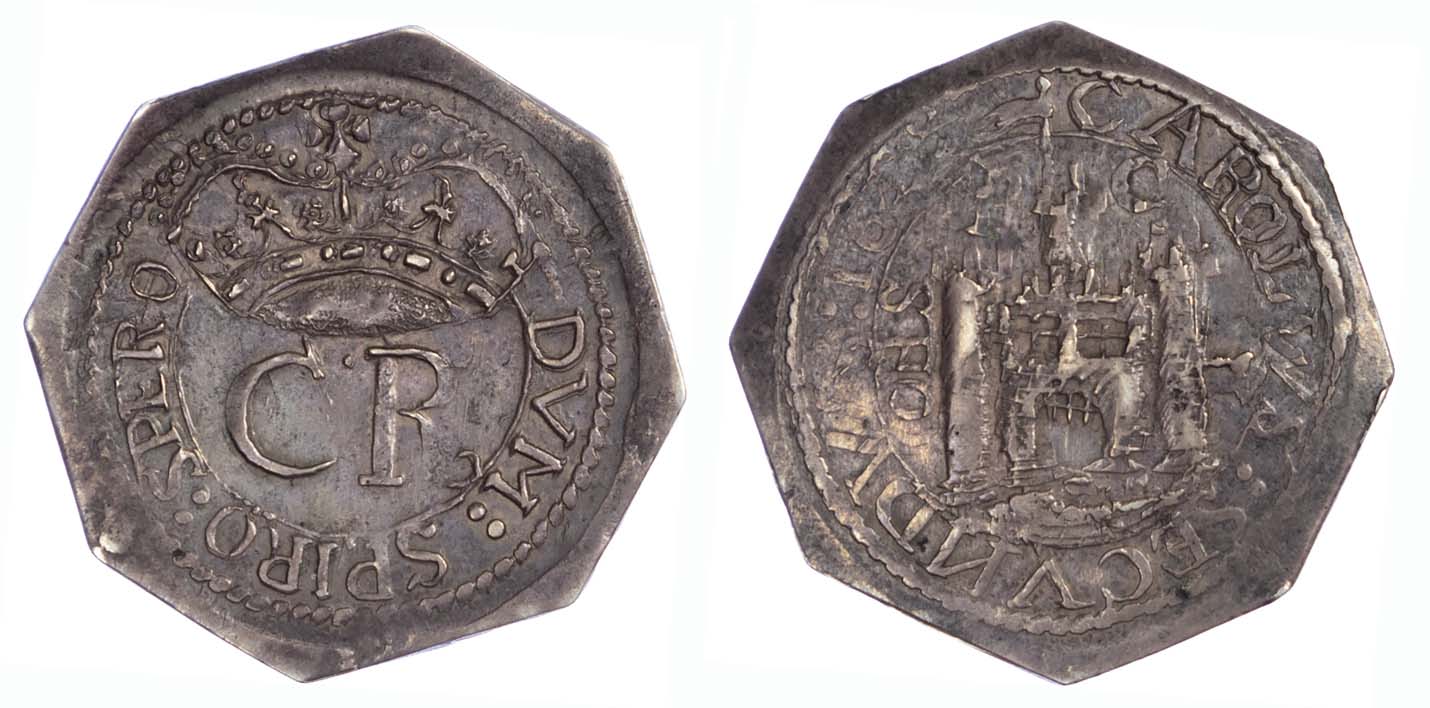Description
Charles I (1625-49), Pontefract siege Shilling, 1648, issued on an octagonal fl an struck in the name of Charles II after the execution of Charles I. Crown above C.R at centre, legend reading DVM: SPIRO. SPERO. Rev, Pontefract castle with a central gateway, cannon protruding to right, flag flying from tower above dividing P and C, OBS to left, legend surrounds CAROLVS: SECVNDVS: 1648, 4.59g (Brooker 1234; N.2648; S.3150). Well struck on a full octagonal flan, cabinet toning. Obverse good very fine, the reverse extremely fine.
Purchased K.B Coins, Coinex, 2001
Ex Broadstairs Collection
A most attractive example of this classic siege (‘OBS’) coin, made on a flan cut by hand from silver plate, bearing the initials of the castle, and the Latin legend DUM SPIRO SPERO, translating to mean ‘Whilst I Live I Hope’. This appears only on the emergency coins issued at Pontefract, and its irony is compelling because Charles had already been captured and imprisoned. Challis provides a tantalising peek (A New History of the Royal Mint, page 283) at what he calls the make-shift mints at the king’s fortresses: ‘. . . all the royalist provincial coinages of the civil war have one thing in common, fewness of numbers. For all his access to the silver from Wales and the plate of colleges, aristocrats and the like, Charles I never achieved a bullion supply in any way commensurate with that of Parliament. In all probability the output of all his mints during the entire conflict was no more in total than two or three average months’ output at the Tower between 1642 and 1645′. Add to this consideration that many of his siege coins were slightly light in weight, and it is easy to see how most were tossed into melting pots after the war. Surely almost all remaining coins were finally lost to the Great Recoinage of the late 1690s. This metallic glimpse at the siege survived, while the king did not.





